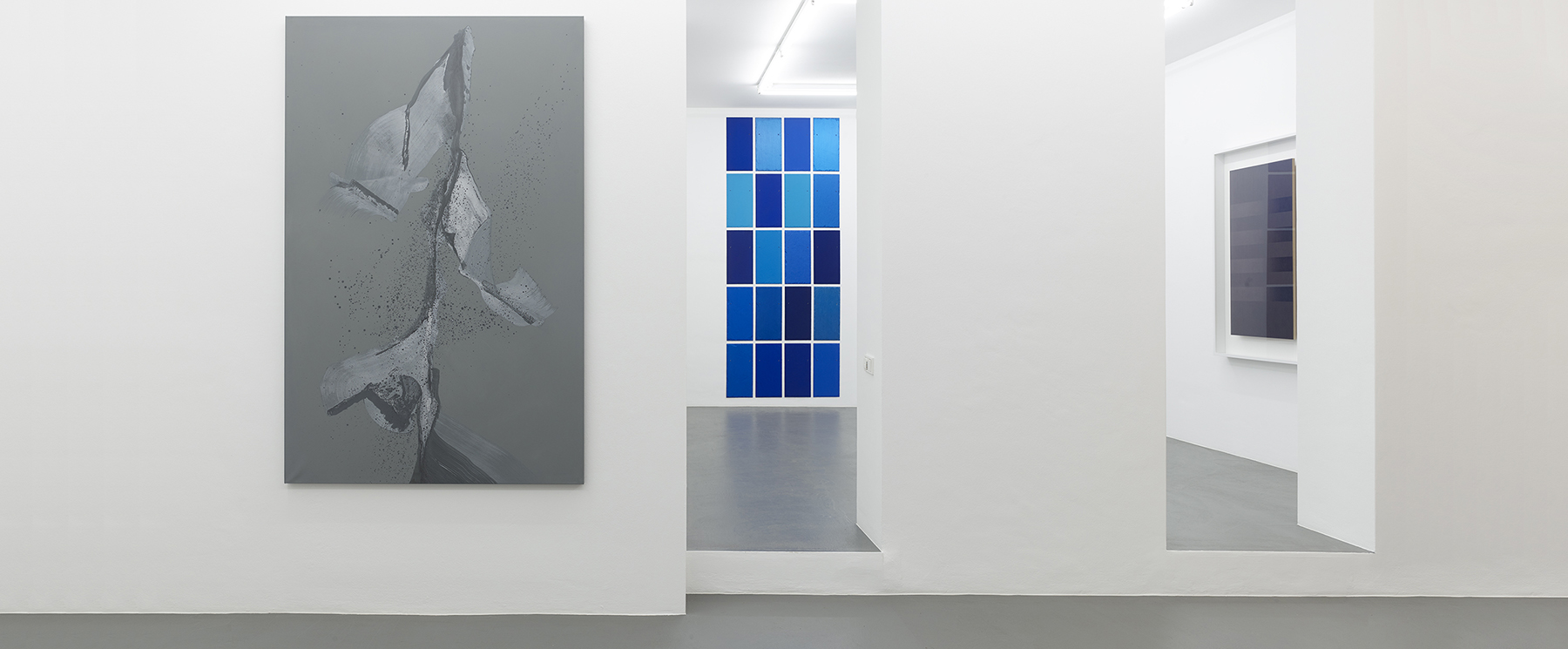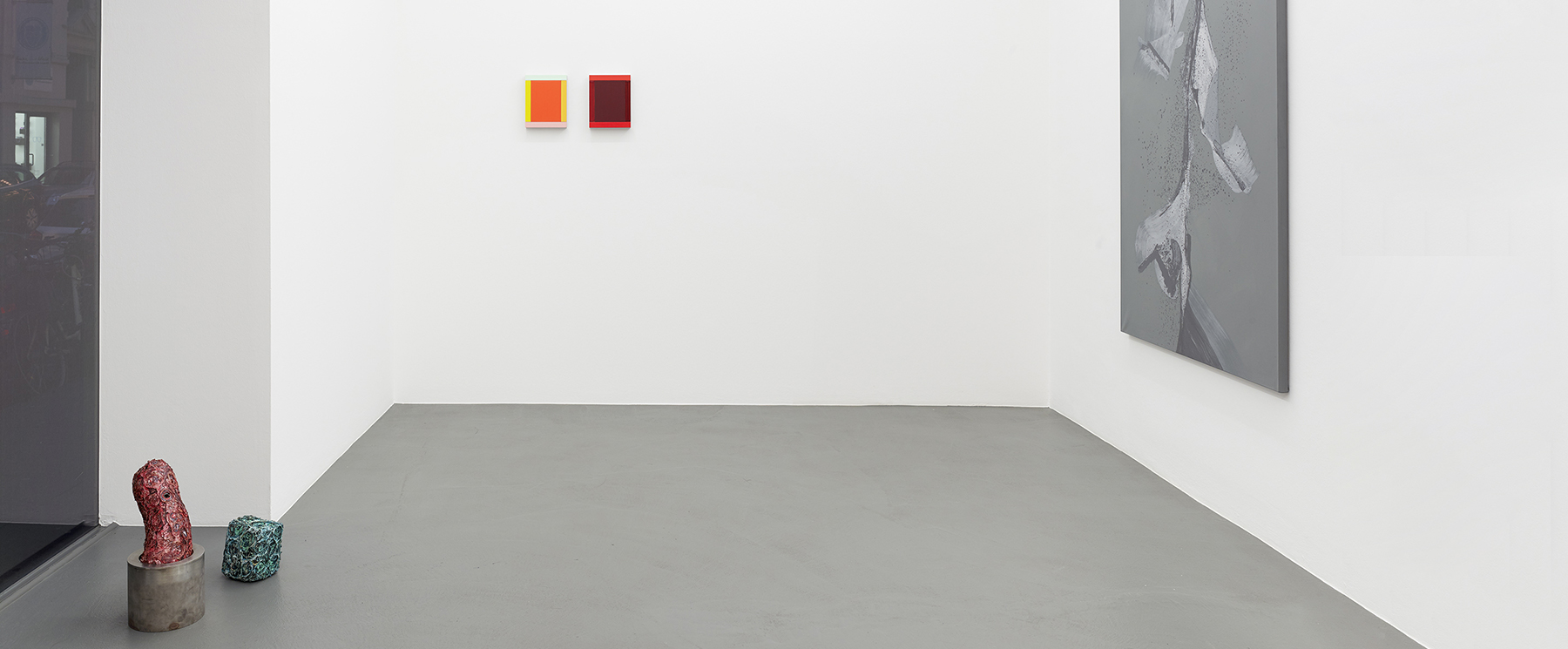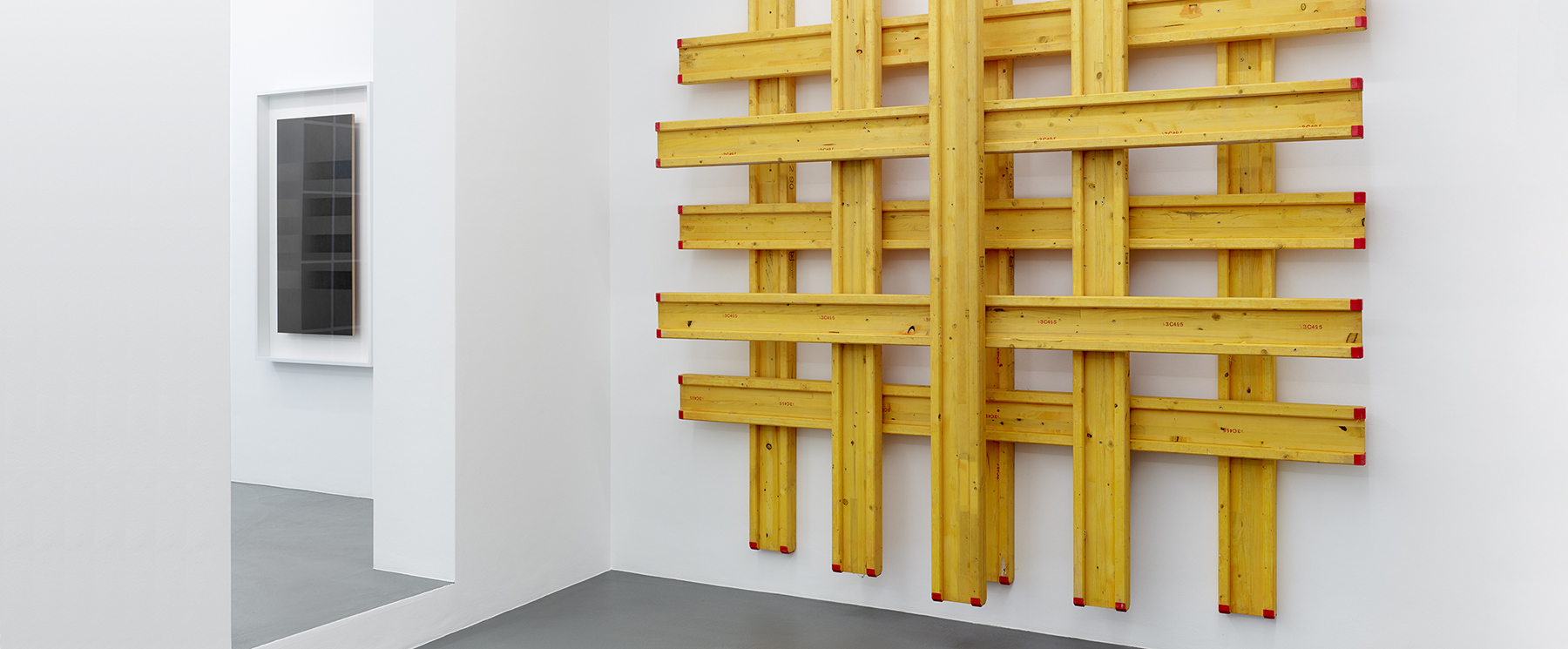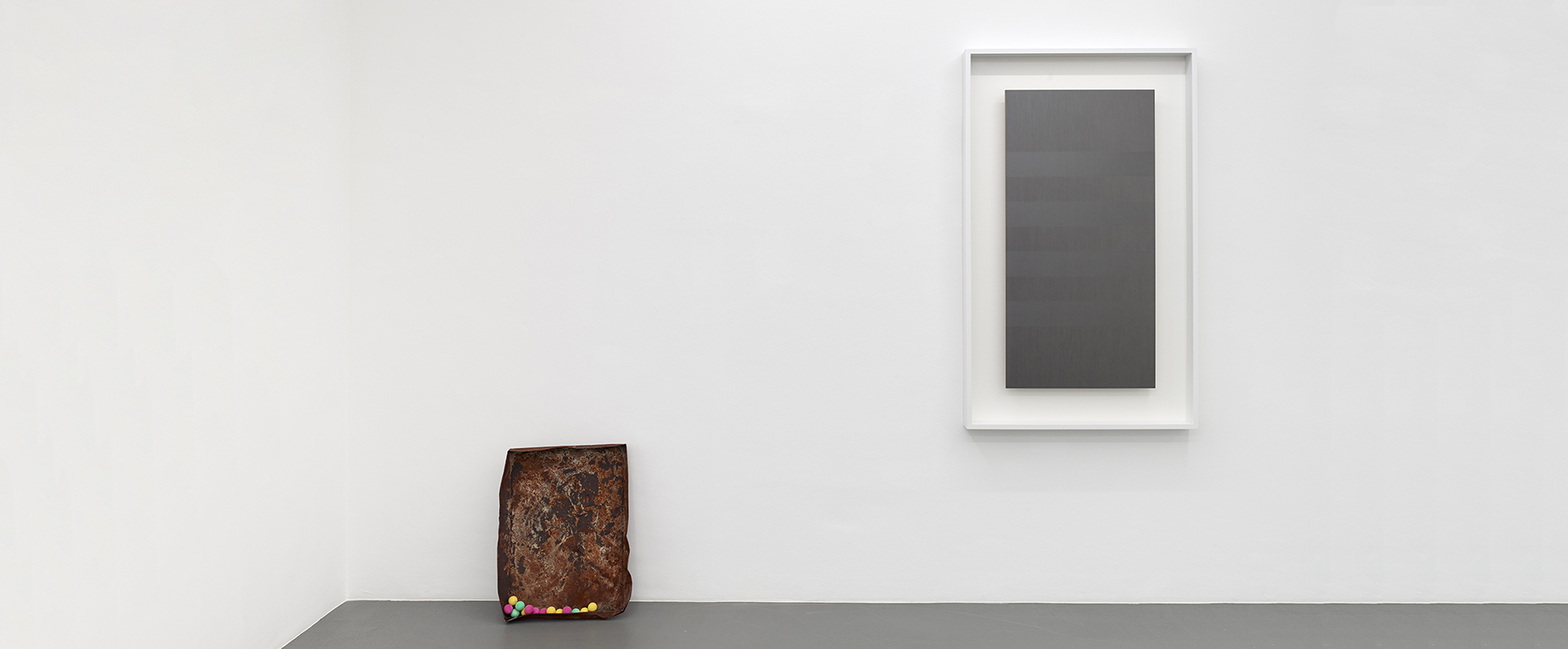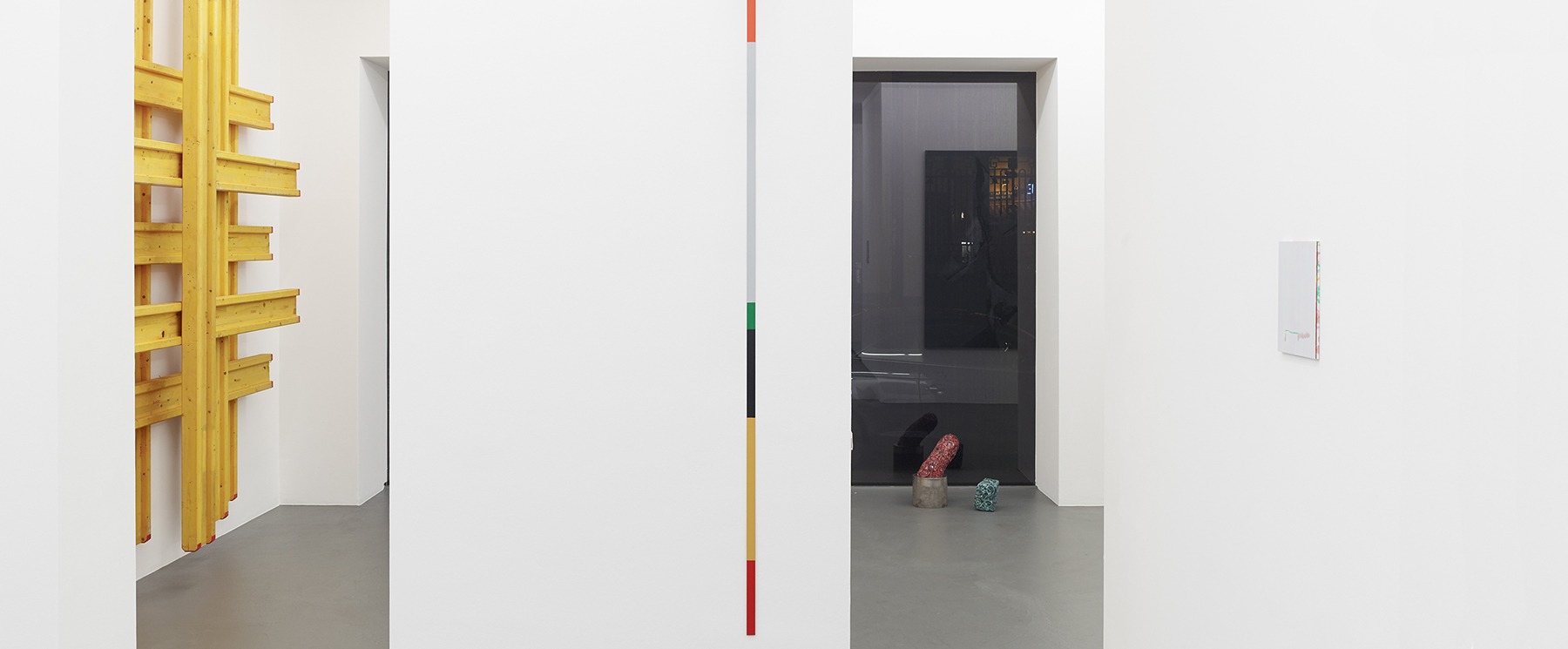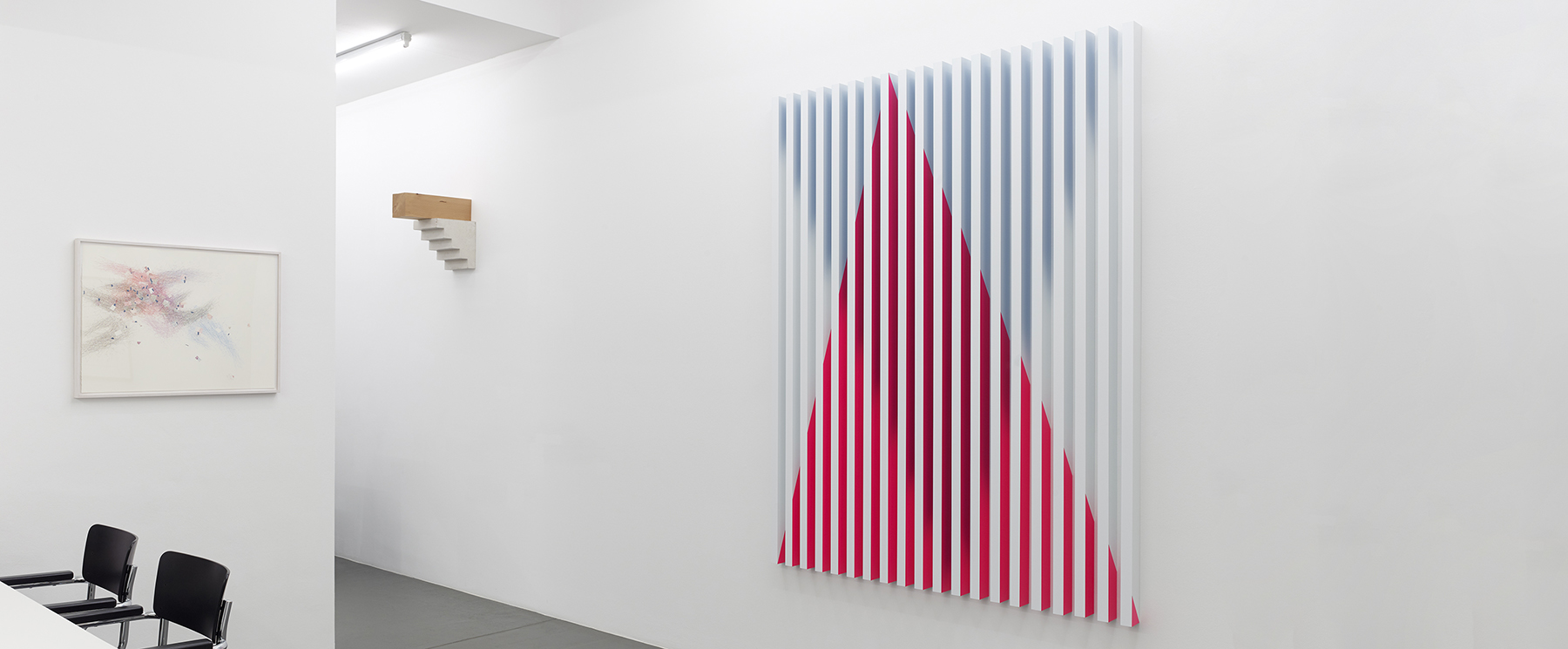GROUPSHOW
16.01.2015 - 28.03.2015We are pleased to announce our annual GROUPSHOW including works by all artists of the gallery. This year we are happy to introduce to you three new artists we will start working
together with in 2015: Frank Gerritz, Hubert Kiecol and Winston Roeth.
»Matrix« is Kai Richter’s (*1969) latest, large-scaled wall-work made of DOKA, which is a recurring material in the work of the Düsseldorf ›based sculptor‹. Both title and form indicate the strictly constructed composition of horizontally and vertically interacting yellow wooden beams.
Experimentation with metals such as copper, iron oder zinc characterizes the latest body of Daniel Lergon’s (*1978) work. The exhibited zinc painting is the outcome of a chemical reaction between acidified water and powdered zinc. This brings forth an individual kind of painting, that unlocks its visual potential in the interaction of light, color and material.
Imi Knoebel’s (*1940) series »Anima Mundi« refers to the antique concept of the world soul. Always maintaining a strict geometric structure, the artist plays with a variety of color and the surprising effects these combinations create.
A small steel container seems to release a colorful mass of a certain kind from the underground. With »Glimp« Gereon Krebber (*1973) again humorously plays with organic and
alive looking forms.
With »Past Perfect« Irish painter Fergus Feehily (*1968) once again demonstrates his inexhaustible sensitivity for painting and material. Two delicate lines meet on a monochrome, light rose painting surface. The uncountable layers of the work are only visible from the painting’s sides.
Lutz Fritsch‘s (*1955) »Parameter« is a lathy vertical line whose segments are painted in different colors. It evokes the idea of a measuring tool, both unknown and familiar and the same time. The color segments are not based on actually calculated dimensions, they are rather intuitive decisions made by the artist. These Parameters could be associatively applied to the viewer’s own personal events.
Hamburg based artist Frank Gerritz (*1964) operates in a strictly abstract manner. »Four Centre Connection V«, significant for his Oeuvre, is characterized by a geometric form language. The surface evolves layer by layer by applying graphite in the most precise way and developes a fascinating effect of depth.
With »Les Femmes d’Alger« Joe Fyfe (*1954) makes use of found materials again. Small, bright and colorful balls are positioned in an old rusty metal box, whose surface structure reminds of Eugène Delacroix’s painting »Femmes d’Alger dans leur appartement« from 1834.
»Blue Angle« by American artist Winston Roeth (*1945) is composed of twenty slate panels, which function as a natural painting carrier. Many thin layers of tempera are applied with a brush on each panel one by one. Painting for Winston Roeth is therefore a temporally defined process in which color develops continuously. From this process arose a sensitive and calm palette of blue color shades.
Cologne based artist Hubert Kiecol (*1950) holds an important role in contemporary sculpture. His post-minimal works are defined by basic forms and materials of architecture.
Abstract and reduced form of steps, gates, fences or houses made of concrete, steel or wood characterize his work. In our GROUPSHOW we present his work »Träger« from 2012. The wooden block heavily rests on its concrete carrier and at the same time might fall over due to its forward-leaning position. This leads to a sensible relationship of tension.
Three-dimensionality is an important aspect to Rana Begum’s (*1977) multipart wall-works that offer a vast number of possible angles from which the viewer can choose the perfect position to look at them. In our GROUPSHOW we present the latest work with the title »No. 528«. Shining, clear colors and two triangle shapes on a white background strongly interact while walking around them.
The new folded drawings by Jill Baroff (*1954) are a reiteration of the earlier folded drawings from the 1990’s and expand on their themes of temporal and structural development. They begin by defining the edge of the paper with a border. This pair of parallel lines is filled with graphite and then the sheet of paper is folded, each time casting the border onto the surface of the receiving side of the fold (what is transferred is then erased from the border). »I’m very interested in the way these drawings describe a period of time on their surface. There is a trace left of the activity of drawing over time and this yields a description of space.« (Jill Baroff)
»Bergen« is the latest group of work by Berlin based artist Max Sudhues (*1977). Photos of alpine landscapes are placed on semifluid plaster and treated with a cutter knife before returning this three-dimensional collage back into the media of photography. The plasterblock next to the photography merges with the image and conflates into a mountain massif itself.
Nelleke Beltjens‘ (*1974) constantly develops her complex drawing techniques. Large clusters of thin and subtle ink strokes are fragmented by cutting and exchanging pieces of
paper within the drawing. The Dutch artist does not understand this as a process of destruction but opening, which leads to new possibilites and movement. »Contemporary life is characterized by uncertainty and complexity. Change is not only an idea, but rather felt on many levels. Nothing is solid, all is fragmented and in movement«. (Nelleke Beltjens)
